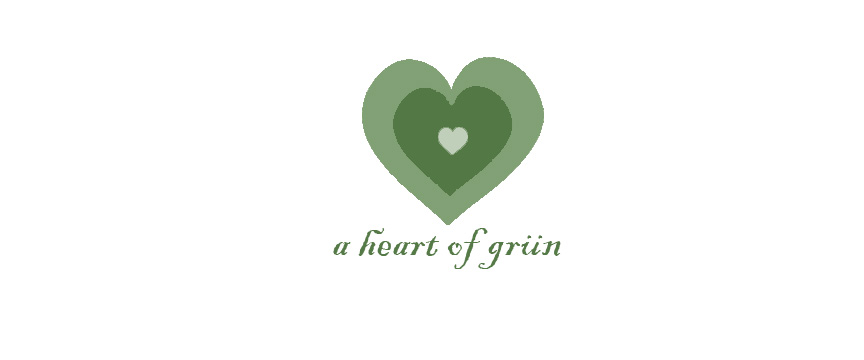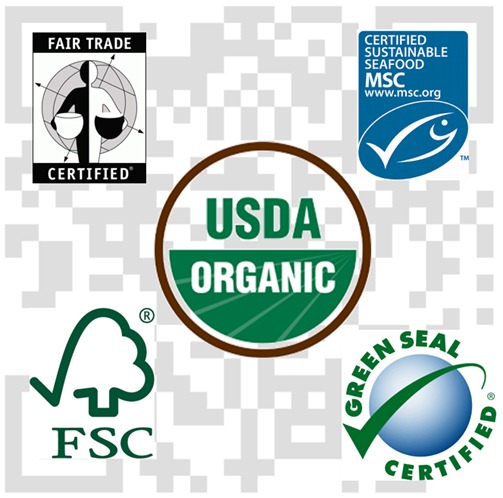it’s no surprise manufacturers and marketers have been taking advantage of the eco-conscious consumer trend. consequently, creative marketing claims or “green-washing” has made deciphering packaging labels overwhelming and often misleading. so when I found this article on rodale last week, I knew I had to share. it’s THE secret decoder ring for product labeling. see if you can find any this weekend in your shopping adventures.
# 1: USDA Organic
Where You'll See It: Food and personal-care products.
What It Means: USDA Organic certification is the only guarantee that the food you're buying was produced without pesticides, genetic modification, irradiation, or fertilizers containing sewage sludge, and it guarantees that livestock and poultry weren't treated with antibiotics or growth hormones. It's illegal for any food producer to use the term "organic" on a food label if the product doesn't meet the USDA criteria. Products containing 95 to 100 percent organic ingredients can bear the USDA seal, while products with at least 70 percent organic ingredients can be labeled "made with organic ingredients." The USDA has yet to establish standards for personal-care and household products, so there their labeling isn't as reliable.
# 2: Fair Trade Certified
Where You'll See It: Coffee, chocolate, tea, rice, cotton, wine, flowers, and sports balls.
What It Means: Fair Trade certification started out as a way to ensure that farmers in developing countries who produce commodity crops, such as coffee and chocolate, aren't impacted by fluctuations in the prices of those crops on the world market. Companies who buy Fair Trade Certified crops pay the farmers a certain percentage more than current market value, plus a premium if the crops are certified organic, and the farmers are then required to use that money to fund community projects like scholarships, organic certification programs, and health care. While Fair Trade certification isn't a guarantee that a product is organic, the requirements prohibit genetically modified organisms and certain hazardous agrochemicals, as well as forced child labor, which remains a big problem on many noncertified cocoa plantations.
# 3: Green Seal
Where You'll See It: Household cleaning products, laundry detergents, residential cleaning services, bath tissue, paints, and floor finishes.
What It Means: Green Seal is an independent nonprofit that uses input from scientists, industry experts, government agencies, and the public to create certification criteria for products that have extremely low health and environmental impacts. It's the most rigorous certification program for household cleaning products around, and as such, very few products have achieved certification. In addition to household products, Green Seal certifies hotels, restaurants, industrial cleaning products, and office paper.
# 4: FSC Certified
Where You'll See It: Office and copy paper, wood furniture, lumber.
What It Means: "FSC" stands for Forest Stewardship Council, which is an independent agency created in 1993 by a coalition of environmental groups, the timber and forestry industries, indigenous communities, community forestry groups, and a variety of then-independent forest product certification organizations from 25 countries. The group certifies forests based on 10 primary criteria and a variety of regionally specific rules, among them, making certain that the biodiversity and natural habitats of the natural forests are protected, that logging practices aren't destructive to surrounding areas, and that indigenous land ownership is respected. Companies that don't manage forests themselves can be "chain of custody" certified, guaranteeing that wood from certified forests doesn't get mixed in with noncertified wood products along the supply chain.
#5: Marine Stewardship Council
Where You'll See It: Non-farmed fish and seafood products.
What It Means: The Marine Stewardship Council (MSC) protects wild fisheries in the same way that the Forest Stewardship Council protects forests. The agency hires independent third-party certifiers to assess the management of fish harvesting based on three principles: that fishing be done in a way that doesn't deplete stocks of a certain fish; that fishing operations don't cause indirect harm to other marine ecosystems; and that fishery managers can adapt to sudden changes in supply while still maintaining the health of the fish populations. MSC certification is the easiest way to ensure that wild fish populations aren't overharvested, but the label doesn't assure consumers that the fish are free of environmental contaminants like mercury.


Good luck with your booth tomorrow! What a teacher (and leader!) you are! Proud of you and your efforts. :)Debbie
ReplyDelete